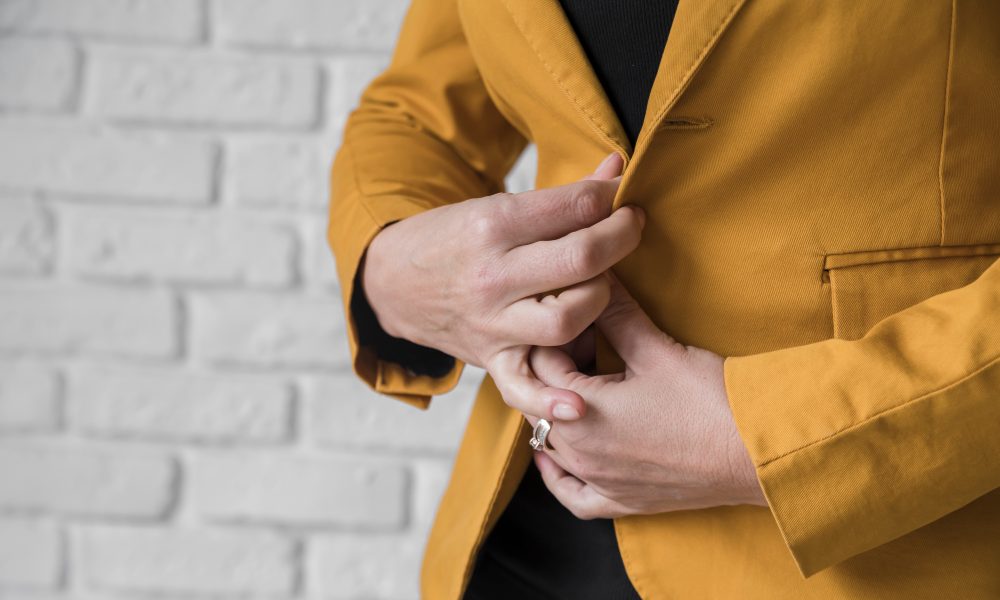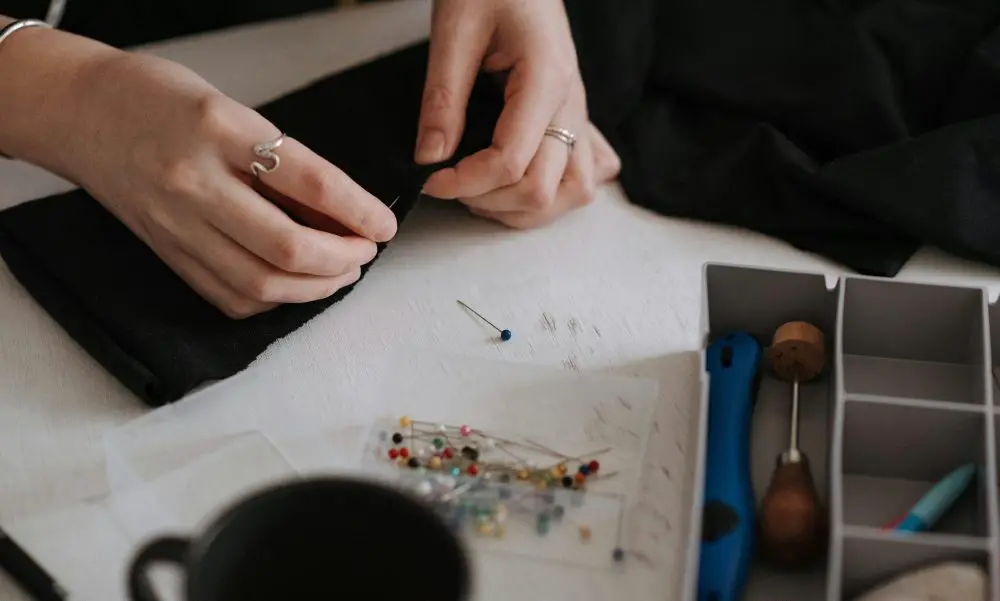Sewing buttonholes by hand is a valuable skill that can elevate your handmade garments and accessories to a professional level. Although it may appear daunting initially, with the correct methods and consistent practice, you can produce durable, precise buttonholes that endure over time.
Here’s a concise breakdown of the process:
- Mark the buttonhole placement
- Cut the buttonhole opening
- Work buttonhole stitches around the opening
- Secure the stitches and finish
- Add reinforcement stitches
- Open the buttonhole
Ready to master this essential sewing technique? Let’s get started!
Preparing for the Buttonhole
Before you begin stitching, preparing the area where the buttonhole will be placed properly is essential. This ensures that your buttonhole is not only functional but also visually appealing.
Marking the Buttonhole
Decide on the ideal placement for the buttonhole and mark it on the fabric with a water-soluble pen or tailor’s chalk. The buttonhole should align with the center of the button on the opposite side of the garment. Make sure to measure and mark the placement accurately, as a misaligned buttonhole can throw off the entire look of your project.
Cutting the Opening
Using sharp scissors or a seam ripper, carefully cut a vertical slit where the buttonhole will go. The slit should be slightly shorter than the diameter of the button to allow it to fit snugly. Be precise with your cuts, as a jagged or uneven opening can affect the overall appearance of the buttonhole.
Working the Buttonhole Stitch

Now that you’ve prepared the area, it’s time to start stitching the buttonhole itself. The buttonhole stitch is a series of overcast stitches that encircle the slit, creating a sturdy and decorative opening.
Starting the Stitch
Anchor your thread by making a few straight stitches across one end of the slit. Bring the needle up through the center of the slit, and you’re ready to begin the buttonhole stitch.
Overcast Around Opening
Working from left to right, make tight overcast stitches around the slit’s perimeter. Space each stitch close together for strength and stability, ensuring that the stitches are evenly spaced and consistent in size.
Ending the Stitch
After encasing the entire slit with the overcast stitch, work several tiny straight stitches across the open end to secure the buttonhole. Knot and trim the excess thread, being careful not to leave a long tail that could catch or unravel.
Finishing Details
While the buttonhole stitch is the main component of a handmade buttonhole, you can take a few extra steps to add strength and polish to your work.
Adding a Bartack
For extra reinforcement, make a horizontal bartack at each end of the buttonhole by making several tight stitches side-by-side. This additional layer of stitching helps prevent the buttonhole from stretching or tearing over time, especially in high-stress areas like jacket fronts or waistbands.
Cutting Open Buttonhole
Once you’ve completed the stitching and reinforcement, carefully cut through the center of the slit using sharp scissors, being careful not to cut through the stitches themselves. This final step opens the buttonhole, allowing the button to pass through easily.
Mastering Handmade Buttonholes
Like any sewing technique, creating perfect handmade buttonholes takes practice and patience. Don’t be discouraged if your first few attempts aren’t flawless – with each buttonhole you sew, you’ll develop a better understanding of tension, stitch spacing, and the overall process.
Here are a few tips to help you achieve professional-looking results:
- Use high-quality thread and a sharp needle to ensure clean stitches.
- Experiment with different stitch lengths and tensions to find the right balance for your fabric.
- Consider using a buttonhole chisel or punch to create crisp, even openings.
- Practice on scrap fabric before tackling your final project.
FAQs
What type of thread should I use for buttonholes?
Using a strong, tightly twisted thread like buttonhole twist or pearl cotton is best. These threads are designed to withstand the stress and friction of buttons passing through the buttonhole.
Can I sew buttonholes on knit fabrics?
While possible, buttonholes on knit fabrics can be tricky due to the stretchy nature of the material. Stabilizing the area with lightweight fusible interfacing is generally recommended before stitching.
How do I determine the correct buttonhole size?
As a general rule, the buttonhole should be slightly shorter than the diameter of the button it will accommodate. This allows the button to fit snugly without straining the buttonhole.
Is it possible to utilize a sewing machine to sew buttonholes?
Most modern sewing machines have a buttonhole stitch function that can quickly and efficiently create buttonholes. However, learning to sew them by hand is still a valuable skill, especially for delicate fabrics or repairs.
***
Do you have any tried-and-true techniques for sewing perfect buttonholes by hand? Feel free to share your tips and tricks in the comments section!
***
Main image: pexels




